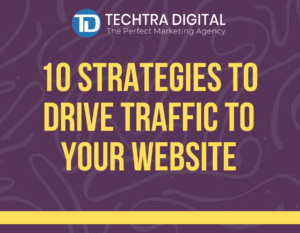It’s crucial to think about how users will be presented with content while developing a website. In this area of web design, visual hierarchy is essential. Visual hierarchy describes how elements are arranged on a page to direct the user’s attention to the most crucial information. We’ll talk about the value of visual hierarchy in web design and how it may enhance user experience in this blog.
By creating high-caliber content, creating cutting-edge marketing plans, and, of course, dishing out a beautiful website, website owners attempt to maintain their position at the top.
Even while content may still be king, no one wants to read anything on a website that is poorly designed.
As business owners vying for an online presence, keep in mind that a website’s general aesthetic appeal also helps to draw readers in and shouldn’t be ignored.
You must consider the information flow on your website if you want to increase website traffic. This necessitates considering the design, visuals, and organization of your website.
Prioritizes Information
Information can be prioritised by designers according to its importance using visual hierarchy. The most crucial details must to be given the most visual emphasis and placed in the centre of the page. The employment of colour, size, positioning, and font can accomplish this. Users may quickly and easily find the stuff they need by ranking the information.
Enhances User Experience
A website’s user experience can be improved by a well-designed visual hierarchy since it makes website navigation simpler for visitors. Users are less likely to feel overloaded or frustrated when information is presented in a logical and orderly manner. Higher engagement, less bounce rates, and more conversions may result from this.
Size
Although bigger is more visually appealing, it is not always better. The most straightforward way to put it is that your most crucial component should be the one that stands out, but when we get into the specifics, it gets a little more complex. Clicking on larger items requires less effort from the user. This is particularly important for calls-to-action because you want to make it clear where the user should go. Of course, that doesn’t mean that increasing your “DOWNLOAD NOW” call-to-action size by 10x will automatically increase conversions. The secret lies in the subtlety and harmony of the elements.
Colour
Colors are visually appealing to humans, especially when they are strategically employed to draw attention to significant text or images. Whether it’s on a traffic sign by the side of the road or a flier hanging in your neighborhood coffee shop, a strong splash of a color like red or yellow, for instance, is difficult to overlook.
One of the most visually appealing methods to distinguish things on a page and focus attention where you want it is through clever use of color.
The Z-pattern interface shown by Fitbit makes excellent use of color. The bold use of magenta signals to the brain that the two ideas are related by placing the calls to action near the top of the visual hierarchy and matching the color of the “Get Active” button.
Increases Readability
A website’s readability can also be increased by using visual hierarchy. Designers may make material easier to read and understand by utilising the right font sizes, contrast, and spacing. For individuals who could suffer from visual impairments or other limitations that impair their ability to read, this is very crucial.
Establishes Brand Identity
A brand identity can be established and strengthened via visual hierarchy. Designers can develop a visual language that customers will connect with the brand by employing consistent typeface, colour schemes, and placement. As a result, brand familiarity and loyalty may increase.
Layout
The interface of your website is one of the easiest ways to manage the visual hierarchy. By putting a focal element in the foreground, you can then employ rows and columns to continue the visual hierarchy and create a more orderly and ordered layout.
This can help control the turmoil while also leaving room for CTAs or other carefully chosen information towards the conclusion. It can be a laborious and delicate balance, but it is essential if you don’t want to overcrowd your website with elements.
Little will stand out in the design as the visual hierarchy can flatten.
Spacing
The use of white space, or empty space, and spacing is one of the most crucial yet sometimes disregarded design principles.
If you don’t provide some room for empty space, your design may appear packed and muddled, overwhelming viewers with information.
When it comes to separating and arranging the components of your design, white space is your best friend. Nobody wants to waste time trying to understand a design. You want a website that is simple to navigate, well-organized, and well-balanced.
Always account for extra room. It is necessary for things like
supplying a resting spot for the eyes and a path through the design
dividing your arrangement into portions (the opposite of proximity is that it takes up less space) to group similar items together; this is a component of proper spacing.) separating the focus.
Differentiates Elements
Using visual hierarchy, you can distinguish between elements on a page. Designers may clearly distinguish between different sorts of content by utilising different colours, font sizes, and placement. For instance, to make it clear what the website’s subject is, headings can be given a larger font size and positioned at the top of the page.
Visual hierarchy is a crucial component of web design, to sum up. Information prioritisation, user experience improvement, readability improvement, brand identity establishment, and element differentiation are all aided by it. Effective use of visual hierarchy allows designers to produce websites that are user-friendly, interesting, and memorable.




